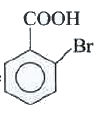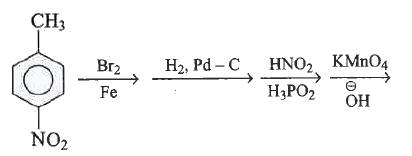Which one of the following mRNA sequences can be translated completely ?
AUG UUC UCC UGG UAA UAU
AUG UUC UCC UGA UGG UAU
AUG ACG UAU UUC UGA CUC
AUG UAU UUC UGC CUC UAG
The correct Answer is:D
To determine which mRNA sequence can be translated completely, we need to analyze the given sequences based on the rules of translation.
1. Understand the Translation Process:
- Translation is the process of converting mRNA into a protein. It begins with a start codon (AUG) and ends with a stop codon (UAA, UAG, UGA).
2. Identify the Start Codon:
- The start codon is AUG, which codes for the amino acid methionine. This codon must be present at the beginning of the sequence for translation to initiate.
3. Identify the Stop Codons:
- The stop codons are UAA, UAG, and UGA. These codons signal the end of translation and do not code for any amino acids.
4. Evaluate Each mRNA Sequence:
- Sequence 1: AUG UUC UCC UGG UAA
- Starts with AUG (methionine) but ends with UAA (stop codon). Translation stops here, so it does not translate completely.
- Sequence 2: AUG UUC UCC UGA UGG UAU
- Starts with AUG (methionine) and continues translating until UAU, which is a stop codon. This sequence translates completely.
- Sequence 3: AUG ACG UAU UUC UGA CUC
- Starts with AUG but does not have a stop codon at the end. This sequence does not translate completely.
- Sequence 4: AUG UAU
- Starts with AUG but immediately encounters UAU, which is a stop codon. This sequence does not translate completely.
5. Conclusion:
- The only sequence that translates completely is Sequence 2: AUG UUC UCC UGA UGG UAU.
Final Answer:
- The mRNA sequence that can be translated completely is Sequence 2.
- Translation is the process of converting mRNA into a protein. It begins with a start codon (AUG) and ends with a stop codon (UAA, UAG, UGA).
- The start codon is AUG, which codes for the amino acid methionine. This codon must be present at the beginning of the sequence for translation to initiate.
- The stop codons are UAA, UAG, and UGA. These codons signal the end of translation and do not code for any amino acids.
- Sequence 1: AUG UUC UCC UGG UAA
- Starts with AUG (methionine) but ends with UAA (stop codon). Translation stops here, so it does not translate completely.
- Sequence 2: AUG UUC UCC UGA UGG UAU
- Starts with AUG (methionine) and continues translating until UAU, which is a stop codon. This sequence translates completely.
- Sequence 3: AUG ACG UAU UUC UGA CUC
- Starts with AUG but does not have a stop codon at the end. This sequence does not translate completely.
- Sequence 4: AUG UAU
- Starts with AUG but immediately encounters UAU, which is a stop codon. This sequence does not translate completely.
- The only sequence that translates completely is Sequence 2: AUG UUC UCC UGA UGG UAU.
- The mRNA sequence that can be translated completely is Sequence 2.
Similar Questions
Knowledge Check
Which of the following sequence of reactions can give
 A
A B
B C
C DPhMgBrCO2−−−−−→H⊕/H2OBr2AlBr3
DPhMgBrCO2−−−−−→H⊕/H2OBr2AlBr3Refer to the given mRNA segment

It can be translated completely into a polypeptide. Which of the following codons may correspond with A and B ?AA-AUG, GUG, B-UA A, UAG or UGABA-U A A ,UGA, B-AUG, GUG or UAGCA-AUG,UGA, B-GUG, UA A or UGADA-AUG, GAG, B-U A A,U U Uor UGAWhich one of the following sequences was propsoed by Drawin and Wallace for organic evolution?
AOverproduction, variations, constancy of population size, natural selection.BVariations, constancy of population size, over-production, natural selectionCOverproduction, constancy of population size, variations, natural selectionDVariations, natural selection, overproduction, contancy of population size.
Which one of the following sequences was proposed by Darwin and Wallace for organic evolution?
View SolutionWhich of the following sequence of reagents can be used for the conversion of :

View SolutionWhich one of the following palindromic base sequences in DNA can be easily cut by EcoRI ?
View SolutionWhich one of the following palindromic base sequences in DNA can be easily cut by EcoRI ?
View SolutionWhich one of the following palindromic base sequences in DNA can be easily cut at about the middle by some particular restriction enzyme?
View Solution
